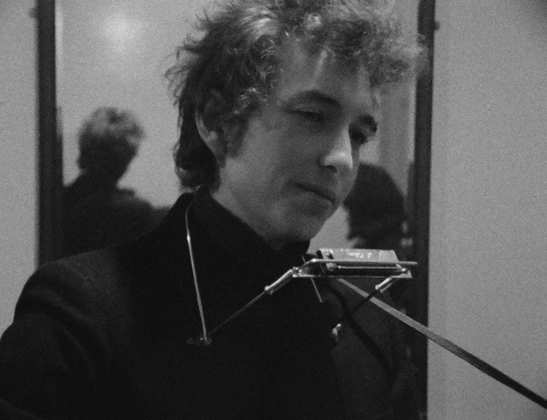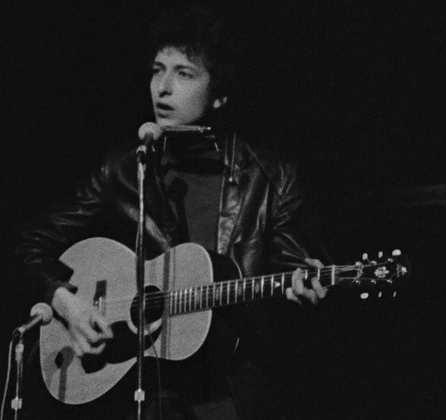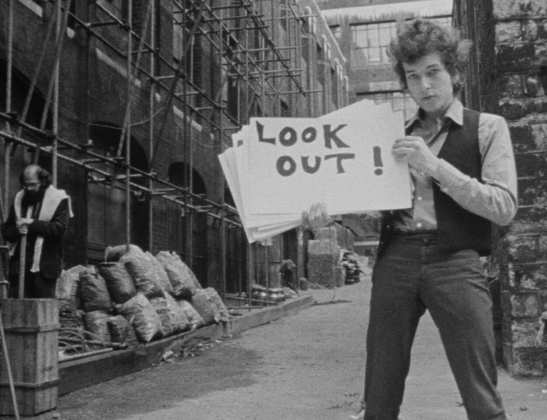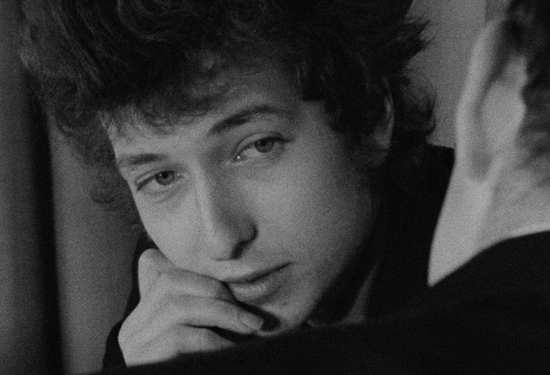Review for Don't Look Back
‘Don’t Look Back’ is a pretty incredible documentary, not just for Dylan fans (for whom this must have felt like the holy grail at the time of release), but for anyone with an interest in either great documentary making, social history, music or just plain ‘reality TV’. As they say, there’s never really anything new in town – it’s all been done before.
Although the film has been available on various formats before, this release is without doubt the best of the bunch and, for ardent Dylan fans, undoubtedly worth a second-dip. Whilst it's great to get a Blu-Ray edition, in truth, this was shot on 16mm and has a natural grittiness that doesn’t necessarily stretch the HD format. A serviceable DVD of the main feature may well suffice. But where it scores most highly is with the extras – and there are simply tons of these.
For those of us in the UK, ‘Don’t Look Back’ always felt special as it was shot in the UK during Dylan’s legendary 1965 tour – the one right before he went electric; so for many it was first phase Dylan at the absolute height of his powers. For me, Dylan’s greatest album is ‘Highway ’61 Revisited’ and this was filmed just prior to that, so early hints at some of those songs are here too. The joy of the film is in capturing Dylan as his most confident, most assured – the cool hipster, arguably a genius, completely exposed for good or ill. It’s a voyeuristic experience for sure, even re-watching it today, and despite (or perhaps because) of its naturalistic, free-flowing feel, you're quickly drawn in to become part of the scene. Even if you’re not the biggest Dylan fan, it’s still great fun to watch.
D. A. Pennebaker was a young film-maker who had already earned something of a reputation as a non-intrusive, documentary maker. He was asked by Dylan’s manager to come along for the 1965 tour with a loose brief to capture it for posterity. Despite not really being a Dylan fan, he achieved this with aplomb.
We see Dylan greeted at the airport by hordes of screaming teens, rather like the Beatles as they landed Stateside, round about the same time. The crew then follow Dylan and his entourage (Joan Baez, Alan Price and, occasionally, the ‘British Dylan’, Donovan) through the tour which took in seven cities like Sheffield and Newcastle before his legendary last dates at The Royal Albert Hall in London.
The performances are stunning. Dylan is entirely confident and on form as he makes his way through his repertoire. Arguably, crowd pleasing favourites like ‘The Times They Are A’Changing’ don’t have the sparkle that his then newer work does (like “Subterranean Homesick Blues”) but there is no doubting that he is on form. The camera work on stage is never intrusive and the audio quality of the performances is really great too, which got me wondering how Pennebaker did that. Were they half-mixes from a desk feed, or ‘ambient recordings’. They were very different times and often musicians would rely on their backline for much of the volume.
The scenes in-between performances, often in a so-called ‘green room’ awaiting to go on stage, or sometimes in hotel rooms along the way, show Dylan at work – jamming with friends like Joan Baez and Alan Price – or simply discussing stuff in an opinionated and self-assured way.
Dylan came into some criticism for the warts and all portrayal here, especially the perceived rudeness to the press, but it’s easy to see how tiresome it must have been to explain to posh sounding middle-aged journalists that he wasn’t merely a folk singer. Or what his lyrics meant. In these scenes he is often verging on the edge of impatient arrogance, answering questions with a superior air. At the time, this may have been construed by youngsters, unused to such things, as the very height of confident cool. Whatever the case, the sunglasses wearing, spindly figure of Dylan was pure beatnik rock n’ roll and made a huge and influential impact on a generation of musicians to follow (not least on Patti Smith who is interviewed for the disc). It’s almost incredible to think that, at the time of filming, Dylan was only 23 years old. Much of the seeming arrogance displayed in the film can surely be attributed to his hot-headed, self-assured youth. At that time, it seemed he couldn’t put a foot wrong.
For some, that came a year later when he started playing with a whole band, upsetting a legion of fans who liked the simplicity of acoustic Dylan. Despite the fact that the current album release (Bringing it all Back Home) contained some electric instrumentation, it seemed his core audience was not yet ready for electric Dylan.
What was also a lot of fun was seeing the ruthlessness of his manager when negotiating Dylan’s fee for TV appearances and additional performances. A large, middle-aged man, almost owl-like behind is glasses, holding out for an extra £500 for a BBC TV appearance, playing one request off another.
In one memorable scene, where Dylan is holding court in a hotel room, shows Donovan witnessing first hand Dylan having a complete melt-down. A drunken hanger on has thrown a bottle to the street from Dylan’s window and he’s not happy. It’s a horribly awkward scene where the embarrassment felt by Donovan, clearly in awe of his hero, is palatable as Dylan throws his toys out of the pram before settling back down to listen to Donovan sing a song. That Donovan was able to, given the vibe, was remarkable, and the song itself seems to restore some sense of well-being back into the room. Documentary making at its best.
The set comes with some really impressive contextual features too – certainly enough to justify buying the set even if it didn’t ship with the film.
• Audio commentary from 1999 featuring Pennebaker and tour manager Bob Neuwirth who discuss the film and the tour with such candour and enthusiasm that it feels like a brand new feature. Occasionally they lock with what we are seeing but just as often they’re riffing in recollection.
• 65 Revisited, an hour long 2006 documentary by Pennebaker which
revisits the film and its context through interviews and archival footage. Very worthwhile.
• 4 minute Audio extract from a 2000 interview with Bob Dylan for the documentary ‘No Direction Home’ (also worth checking out folks) synched to previously unseen outtakes from Don't Look Back.
• Early short films from Pennebaker – After hearing him talk about them elsewhere, it was great to see these technically and creatively impressive films from early in Pennebaker’s career. They include ‘Daybreak Express’ ‘Baby’ and ‘Lambert & Co’, dating back as far as 1954.
• It Starts With Music - A new half-hour documentary tracking the evolution of Pennebaker’s filming style
• Contemporary conversation between Pennebaker and (tour manager) Neuwirth about their work together which runs for about 30 minutes.
• Snapshots from the Tour, which runs for some 30 minutes and is new to this release and which includes never seen out-takes.
• Contemporary and exclusive Patti Smith interview - Her infectious enthusiasm in this 15 minute interview is a joy. It’s easy to forget that most musicians have been devoted fans themselves and Smith credits Dylan, and this film in particular, to her obsession with his style and for being the bridge between the beats and the punks.
• Conversation between music critic Greil Marcus and Pennebaker from 2010 which runs for about 15 minutes.
• Alternate version of the film’s opening “Subterranean Homesick Blues” cue card sequence.
· Five audio recordings of Dylan songs not used in the film. These include To Ramona, The Lonesome Death of Hattie Carroll; Love Minus Zero / No Limit; It Ain’t Me, Babe; and It’s All Over Now, Baby Blue which is almost 8 minutes in length.
There’s also a trailer and liner motes which feature an essay on the film by critic, Robert Polito – proving that, for Criterion, there really is no dead space on the real-estate of their releases.
Criterion’s edition of ‘Don’t Look Back’ is a must have for film fans, music fans and anyone else who enjoys social history and documentary.
Highly recommended.




Your Opinions and Comments
Be the first to post a comment!